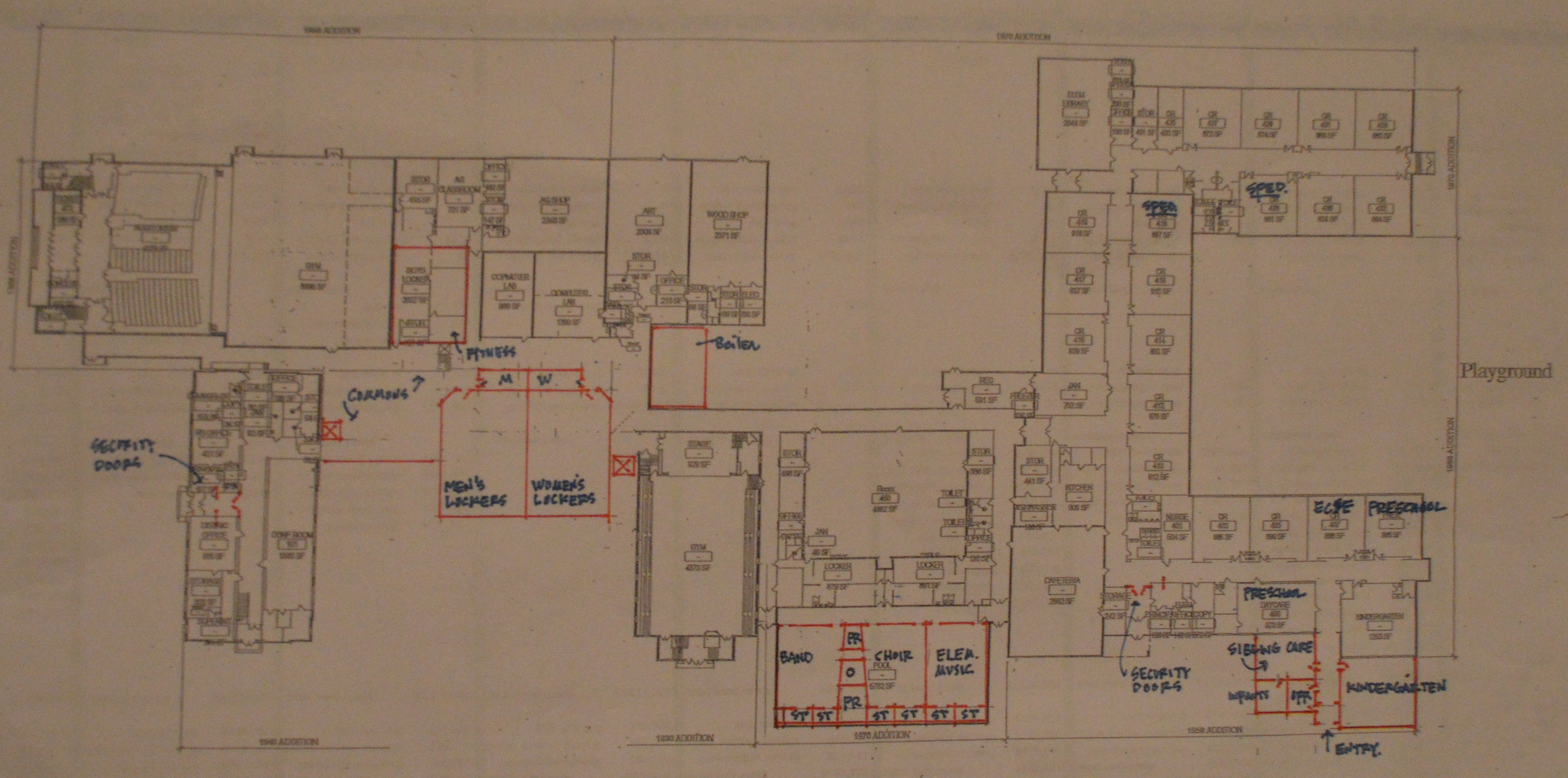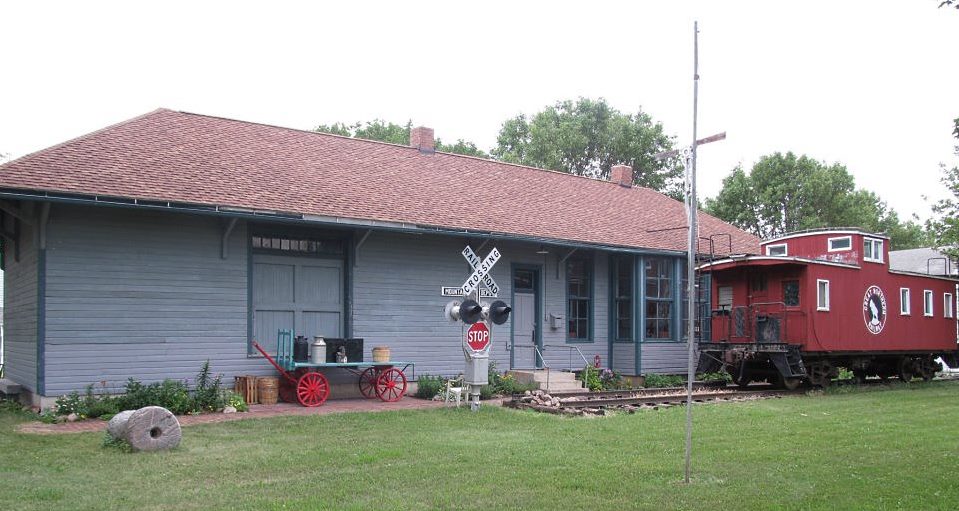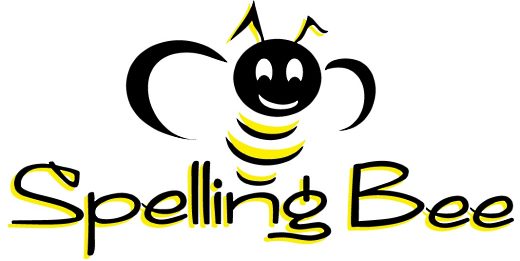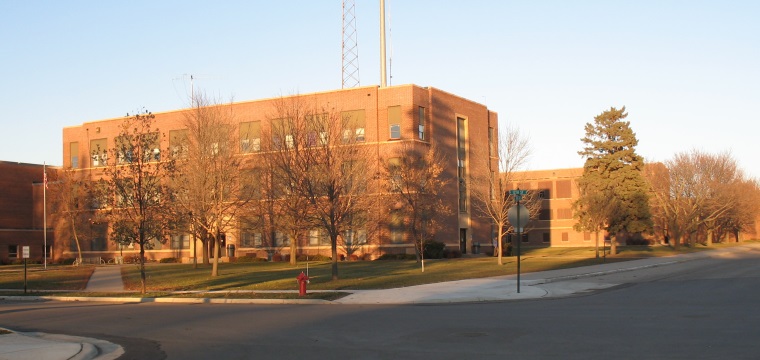Building proposals presented at joint meeting

The Mountain Lake Public School (MLPS) Building Committee, along with Paul Youngquist, architect of Architects Rego + Youngquist, Inc. (ARY) of St. Louis Park, presented proposed school building improvements to members of the MLPS School Board at a joint meeting on Thursday evening, July 28. This presentation was of a draft building plan, and while it is not yet in final form – and the cost of the project is still fluid – proposed improvements are taking shape, and total project costs are becoming firmer.
It was on Thursday, February 18 that the MLPS School Board and its Building Committee initially met with Youngquist to discuss building improvements needed campus-wide at MLPS. School Board members include Chair Doug Standerwick, Vice-Chair Tim Swoboda, Clerk Julie Brugman, Treasurer Pam Hoek and Directors Tom Fast, Matt Gohr and Chad Pedersen. Members of the MLPS Building Committee included in the discussion were its chair, Tim Swoboda and vice-chair, Tom Appel, along with Cheri Hanson, Jerry Haberman, Bruce Swanson, Bryan Bargen, Vern Peterson, Shawn Naas and John Carrison. Also in attendance was MLPS Superintendent Bill Strom.
At that time, the Building Committee was instructed to keep School Board members apprised of their progress as they made decisions and drew conclusions. Thursday’s meeting was one such update, as project plans are nearing completion.
Youngquist led Thursday’s joint meeting by revealing the improvement plan sculpted so far by the Building Committee. He also noted that committee members had discussed the possibility of presenting to school district residents a pair of building bond ballot referendum questions.
The first question would address the architect’s proposed improvements to the school’s buildings.
Front-and-center in that plan is the removal of the 1890 building, which, according to Youngquist, “Has served its useful purpose.” Demolition of that structure would open up space that would be utilized for the construction of a commons area for use by students as a study or gathering area, by teachers as a break-out space for class, and by school district and community groups for meetings or a mini-banquet, as well as new men’s and women’s locker rooms and public restrooms. The women’s locker room is located in the 1890 building.
In this proposal, the current men’s locker room, located adjacent to the auditorium/gymnasium (both part of the 1958 addition, would be transformed into a fitness center with free weights, exercise machines, etc.
A new boiler room would have to be constructed following the demolition of the 1890 building, as the current boilers are located in its basement. This new construction would be in the space between the 1930 addition to the south, and the art room and woodshop that were a part of the 1970 addition to the north.
Changes would also occur in the 1940 (high school) building. The top floor would be remodeled to form a classroom concentration on math and science. The Family and Consumer Science (FACS) rooms would be removed. Replacing that space would be a new science lab. The FACS classrooms would then be appropriated to another location in the agriculture department area.
The second floor would contain an English and social studies classroom focus, as those classes are now held in the 1890 building.
Classrooms on the second level of the 1930 building, above the old gym, would be remodeled into high school special education centers.
The indoor swimming pool would be repurposed into a school-wide music department location, with band, choir and elementary music rooms sharing that space.
Additional new construction would include an early childhood emphasis area on the east side of the campus in the elementary school. Expansion would include the building of a new kindergarten room to the south of the current large kindergarten space, as well as a specialized sibling care room for Town & Country Day Care. The current Day Care space would be remodeled to be a preschool area. With the building of a new kindergarten classroom, the second smaller classroom would become the Early Childhood Special Education (ECSE) room.
At the north end of the elementary, the former elementary music room, and the former ECSE location in the grades 4-6 wing, would become elementary special education classrooms. Those classes are currently held in the 1890 building.
Security doors would be included as part of the improvement plan at the elementary main entrance, the high school main entrance and the newly-created early childhood entrance.
In addition, the project includes on its list of improvements new seating in the auditorium, along with technology, HVAC, ventilation, electrical, fire suppression and lighting upgrades.
The cost for those improvements is estimated at approximately $11 million.
A second question that could possibly be proposed on a bonding referendum ballot would be a decision to retain, upgrade and repair the indoor swimming pool. The cost for such improvements would bump the proposed improvement project total cost to almost $15 million. All other projects would remain static as reported above, however, the new band and choir space would have to be constructed on a second floor above the new men’s and women’s locker rooms.
Built into this plan is an $80,000 annual earmark for maintaining pool operations, supplies, repairs and utilities. These funds would be taken from the school district’s General Operating Fund. The General Fund is used to budget and account for all receipts and expenditures for current operational purposes – except pupil transportation. Money spent from this fund is for the daily operation of the school, such as educational programs, salaries, benefits, utilities and supplies.
According to Swoboda, “While revenues from donations, usage and entrance fees offset some of the lifeguard costs (salaries for lifeguards run through Mountain Lake Community Education), the net shortfall to the district for the pool is running about $60,000-$80,000 a year, after deducting revenues.” The City of Mountain Lake does contribute monetarily in support of the pool every quarter, up to a $15,000 yearly limit.
Also being taken into consideration on the initiation of projects in this plan is the $190,000 available annually with a Long-Range Maintenance Levy.
February 2017 is being considered as the potential target month to hold a building bond referendum on any finalized project plans.
The Building Committee is scheduled to next meet at 5 p.m. on Monday, August 15, at which time they will define the maintenance infrastructure projects that should be included in the plan; producing solid figures on the total cost. They will then come together with the School Board at its regular monthly meeting (also on August 15), at 6:30 p.m., to present their decisions.
Within weeks of those August 15 meetings, intermediate conversations will be held with the community to receive feedback on the plans offered in each question.
The route-to-a-decision calendar points to a possible September approval by the School Board to move forward with a specific building bond referendum plan. If the project is a “go,” additional community meetings will be held in order to share information on the plans, and receive input from citizens.
About Paul Youngquist and ARY
ARY is a planning and design firm that specializes in community facilities in the State of Minnesota. A complete range of architectural and engineering services has been provided to public organizations since 1956 including master planning, new facilities, remodeling and accessibility studies. The educational facilities market constitutes the largest specialty group within the firm. That experience in serving school districts and communities for 40 years has allowed ARY to see the changing faces of education. ARY is proud of its team’s experience, creativity, practical approach to design and attentive follow-through in every step of your project.
Youngquist is ARY’s Principal-in-Charge with 30 years of experience in the design and construction of educational and institutional facilities. As a school architect, he has worked with school communities at all levels of facility improvement – from planning and analysis to new facilities, additions and renovation work. His duties include project management, planning, design, cost estimating, survey and facility reports, specification writing and site observations. He is involved in the data gathering and design phases, and will supervise the production of construction documents and construction administration. Youngquist graduated from the University of Minnesota-Twin Cities in 1974 with a Bachelor of Architecture.
ARY was selected by the School Board and Building Committee in the closing months 2015 from the four firms that submitted an interest.

















